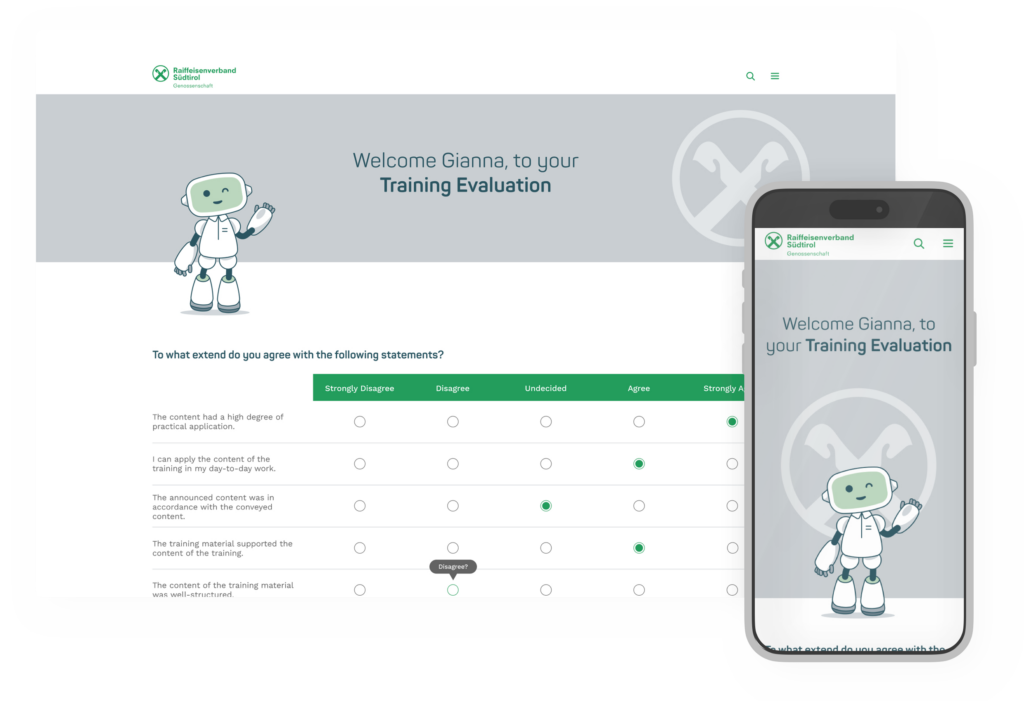Making feedback part of everyday work, where voices are heard and ideas drive real impact.
Feedback is everywhere: team meetings, performance reviews, quick check-ins. But is it actually making an impact?
For many workplaces, feedback feels like a box to check rather than a tool for real change. When done right, it strengthens trust, improves collaboration, and makes employees feel valued. But too often, it gets lost, shared but not heard, given but not acted on.
So how do you create a workplace where feedback isn’t just given but genuinely embraced?
Feedback Facts
- 67% of employees who receive frequent feedback are highly engaged at work, compared to only 31% of those who receive feedback less frequently. (Gallup)
- Companies that foster a strong feedback culture see 14.9% lower turnover rates than those that don’t. (Zippia)
- 86% of employees feel that people at their organization are not heard fairly or equally, and 47% say underrepresented voices remain undervalued by employers. (UKG)
- 41% of employees have left a job because they didn’t feel listened to, and 37% have left because they felt feedback wasn’t being taken seriously in their workplace. (AllVoices)
Speak Up and Be Heard
Ever poured your heart into feedback, only for it to vanish like your lunch from the office fridge?
Creating a culture where feedback thrives starts with accessibility. Employees should feel comfortable sharing their thoughts, whether it’s through structured surveys, one-on-one check-ins, or real-time feedback tools. Transparency is key: let employees know how their feedback will be used and what changes come from it. If feedback feels like a black hole, engagement drops.
Feedback is a Two-Way Street
One-way feedback is like a one-way street. Frustrating and probably leading nowhere.
Open conversations should go in both directions, not just from the top down. Encouraging employees to share their perspectives with leadership creates a culture of mutual respect. Regularly ask for input on company decisions, team processes, and workplace initiatives. The more employees feel heard, the more invested they are in the company’s success.
Make Feedback Feel Natural
Good feedback is like a good playlist. Effortless, enjoyable, and keeps things moving.
Constructive input should feel helpful, not like criticism. Shifting the focus to growth and development makes all the difference. Train managers and teams on how to give feedback in a way that is specific, actionable, and supportive. A well-delivered piece of feedback should leave someone feeling motivated, not defeated.
Feedback Means Action, Not Just Words
Ignoring feedback is like hitting snooze on your alarm. The problem doesn’t go away, it just gets louder.
Few things discourage employees more than feeling like their feedback disappears into the void. If employees take the time to provide insights, they need to see that it leads to real change. Share updates on what’s being implemented, acknowledge common concerns, and celebrate improvements. Even small changes can reinforce that feedback matters.
Keep Feedback Flowing Every Day
Annual feedback is like waiting until the end of a race to tell someone their shoelaces were untied.
Regular feedback should be part of daily interactions, not just a yearly ritual. Peer recognition programs, real-time feedback apps, and project retrospectives all help keep conversations ongoing. The more feedback becomes a natural part of work, the more comfortable people are with giving and receiving it.
Strategies to Encourage and Act on Employee Feedback
Creating a strong feedback culture takes more than just good intentions. Here are a few simple ways to make feedback a natural part of your workplace:
Implement Open-Door Policies
Encourage a culture where employees feel comfortable approaching leadership with their ideas, concerns, and feedback.
Conduct Regular Surveys
Use anonymous surveys to gather honest feedback on various aspects of the workplace, from management effectiveness to workplace conditions.
Hold Feedback Forums
Organize regular meetings where employees can voice their opinions and suggest improvements.
Act on Feedback
Demonstrate that employee feedback leads to real change by implementing feasible suggestions and communicating these changes back to the team.
Provide Training
Equip managers with the skills to solicit, receive, and act on feedback effectively.
Looking to make feedback a bigger part of your workplace?
Find out how to create open feedback channels that drive real impact. Learn more about User Feedback Customization

The Impact of a Culture of Engagement
When feedback flows freely, employees feel valued, teams work better together, and organizations become more agile. A strong feedback culture doesn’t just improve morale. It builds trust, fosters innovation, and drives long-term success.
Companies that actively encourage open feedback create environments where employees feel psychologically safe to share ideas and concerns. This openness leads to continuous improvement, higher job satisfaction, and stronger team dynamics. When employees see their feedback leading to meaningful changes, engagement levels rise, and turnover decreases.
Investing in a strong feedback culture is not just about improving internal communication; it builds trust and fosters an innovative, adaptive workplace that thrives in the long run.
Start small: Open up conversations, create safe spaces for feedback, and show employees that their voices matter. Small changes can lead to a significant shift in workplace culture.

Ready to Strengthen Your Workplace Culture?
Creating a workplace where every voice is valued and feedback leads to real change starts with the right tools and strategies. By fostering open communication and ensuring employees feel heard, organizations can drive engagement, trust, and innovation.
We work with HR teams who shape workplace culture and employee experiences. Whether it is through improving communication, strengthening engagement, or enhancing feedback channels, we are here to support the work that makes a difference.
Let’s keep the conversation going.
Reach out to us via Get in touch, send an email, or book a meeting.


